Arctic sea ice has recorded its smallest winter peak extent since satellite records began 47 years ago, new data reveals.
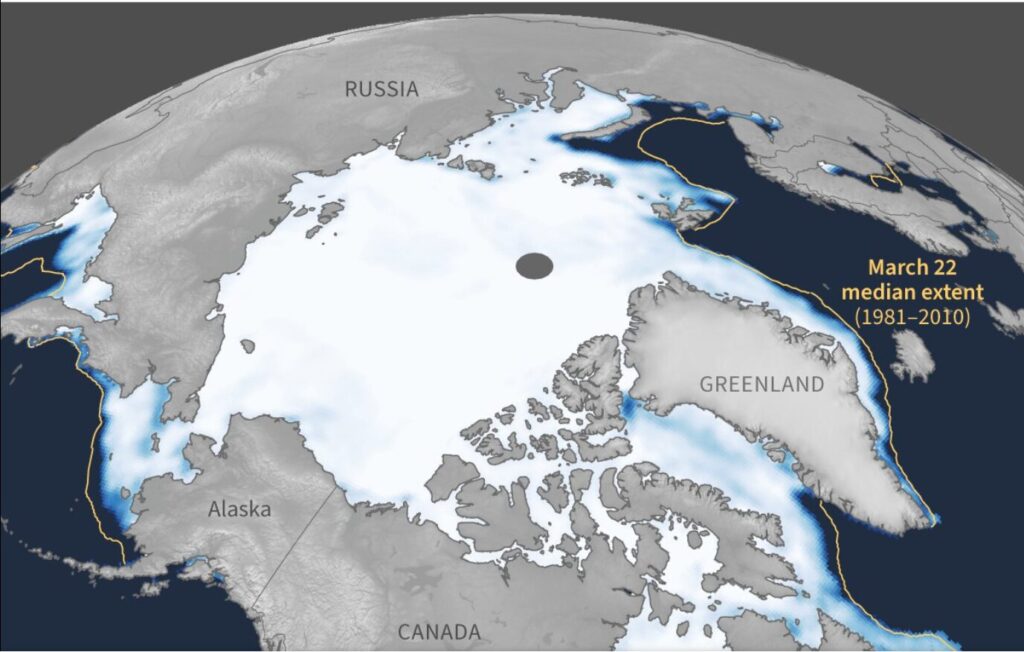
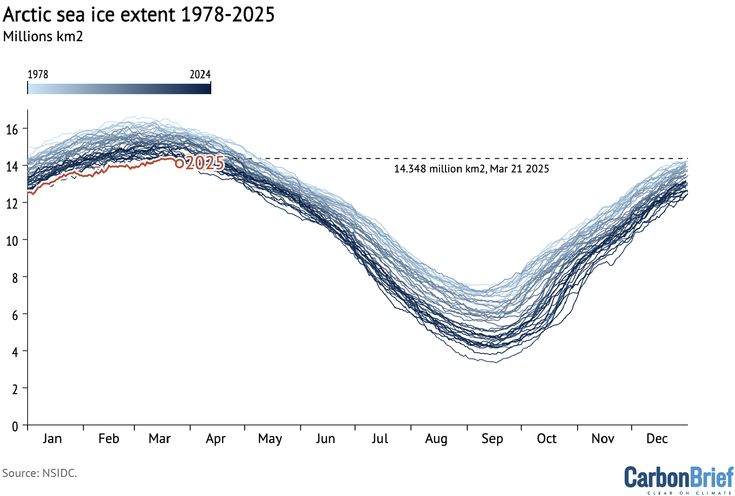
Credit: Carbon Brief
by Ayesha Tandon, Science Journalist, MSci in Natural Sciences, Climate Science, University of Exeter.
Provisional data from the US National Snow and Ice Data Center (NSIDC) shows that Arctic sea ice reached a winter maximum extent of 14.33 million square kilometers (km2) last week.
This is 1.31 million km² below the 1981-2010 average maximum and 800,000 km² smaller than the previous low recorded in 2017, according to the data.
Meanwhile, Antarctic sea ice reached its summer minimum extent earlier this month, tying 2022 and 2024 for the second-smallest summer low on record, according to the National Snow and Ice Data Center (NSIDC).
The combination of reduced sea ice cover in both the Arctic and Antarctic means that global sea ice extent dwindled to an “all-time minimum” in February this year, according to the Copernicus Climate Change Service (C3S).
This new record low is yet another indicator of how Arctic sea ice has fundamentally changed from earlier decades. But, even more importantly than the record low, is that this year adds yet another data point to the continuing long-term loss of Arctic sea ice in all seasons. – Dr Walt Meier, NSIDC senior research scientist
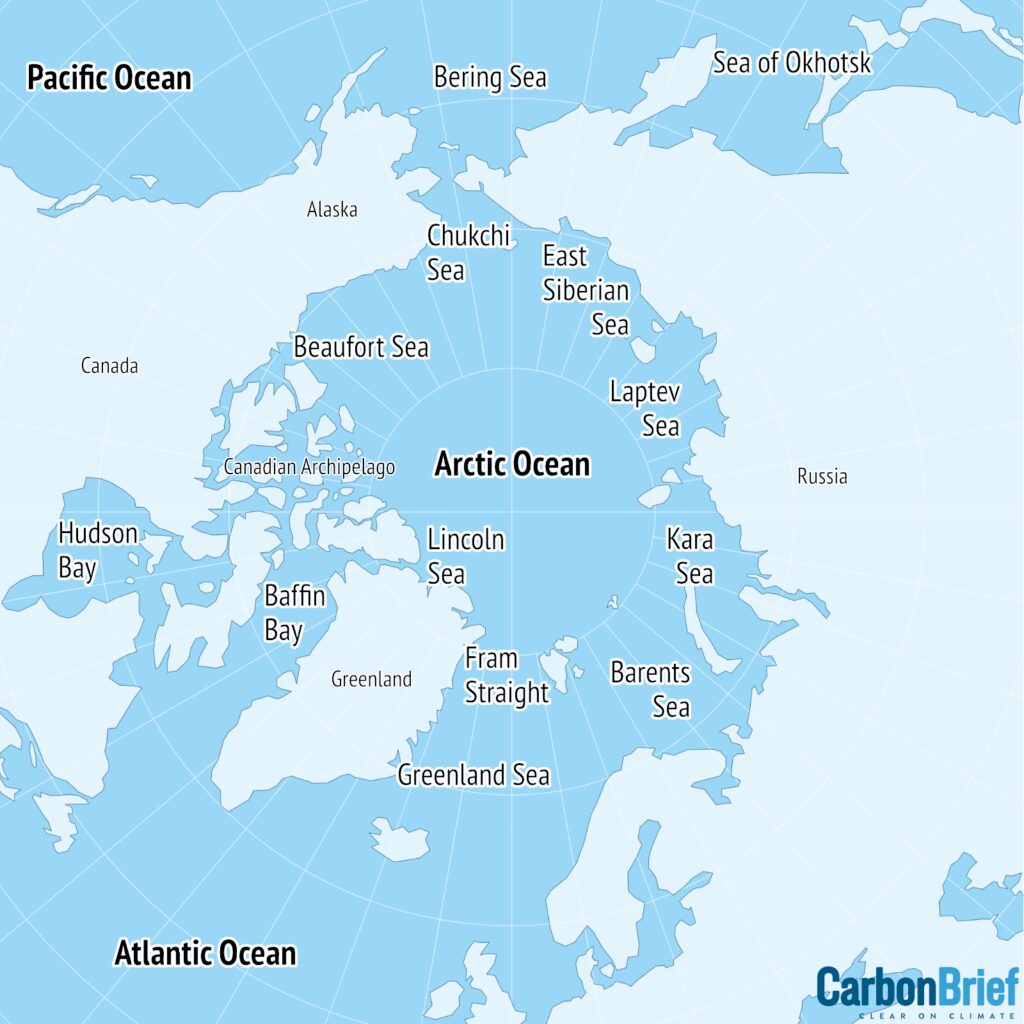
Antarctic melt
At the South Pole, Antarctic sea ice has been declining during the southern hemisphere summer. It reached its annual minimum of 1.98 million square kilometers on March 1.
This summer, the Antarctic extent was tied with 2022 and 2024 for the second-smallest in the 47-year satellite record, the NSIDC says. It notes that the past four years are the only years on record in which Antarctic sea ice has reached a minimum of less than 2 million km².
The graphic below shows Antarctic sea ice extent over the satellite era. Red indicates the 2025 extent, while shades of blue indicate different years from 1978 to 2023.
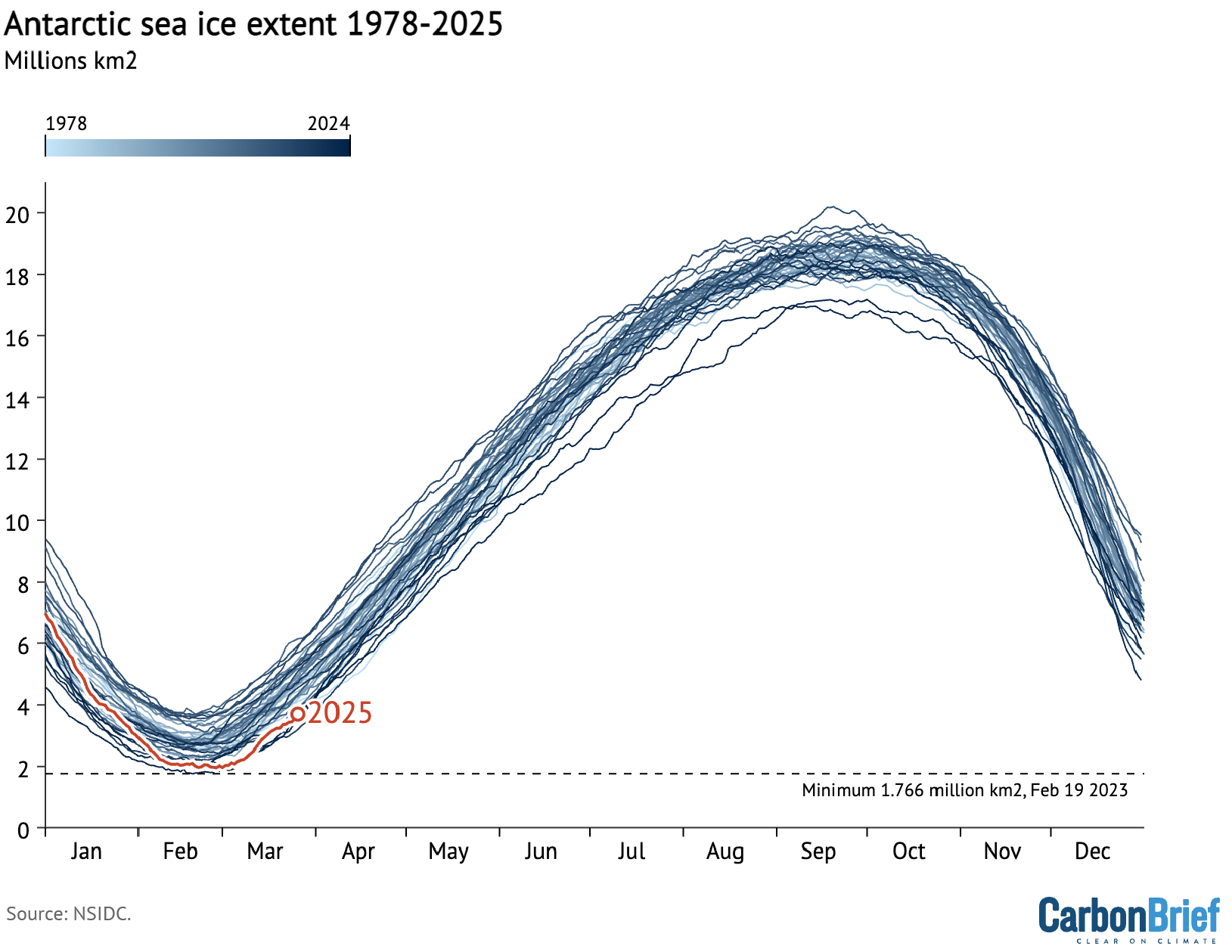
The melt season for Antarctic sea ice began with its winter maximum of 17.2 million km² on 19 September 2024.
This was 1.6m km2 smaller than the 1981-2010 average maximum and the second-lowest winter peak on record, according to the NSIDC.
As the southern hemisphere warmed, Antarctic sea ice began to melt. Throughout October, Antarctic sea ice extent continued to rank the second lowest on the satellite record following the record-breaking 2023 season, the NSIDC says.
It adds that “seasonal ice loss was relatively slow during the early part of the month, but the pace picked up substantially during the last week of October, approaching 2023 values”.
By November 30, Antarctic sea ice was the third lowest on record, tracking higher than the 2023 and 2016 levels for the same date, according to the NSIDC.
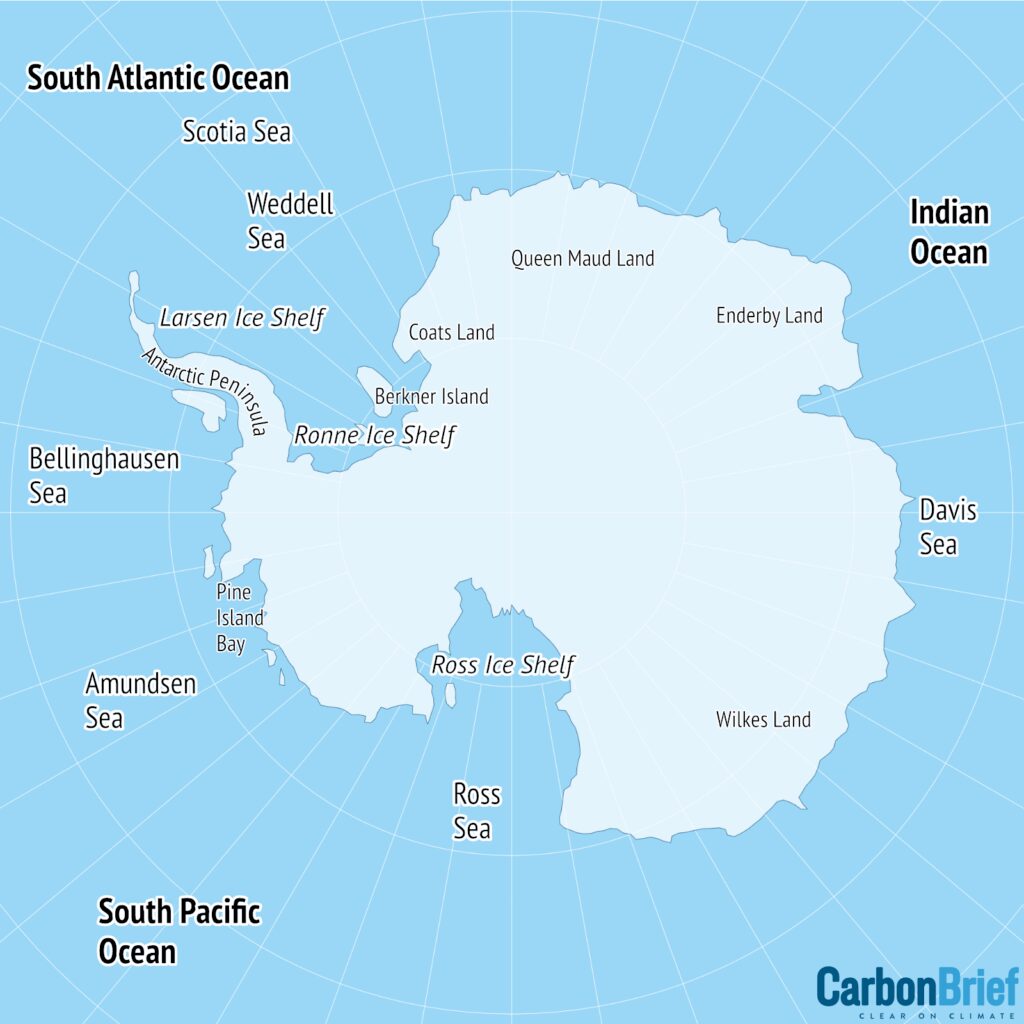
After a “prolonged period of record to near-record daily lows set in 2023 and 2024”, December 2024 saw Antarctic sea ice loss slow down, with the average rate of decline tracking “well below average”.
By the end of December 2025, Antarctic sea ice extent was roughly in line with the average for the 1981-2010 period, according to the NSIDC.
As a result, it says that “speculation that the Antarctic had entered a new regime of strongly reduced Antarctic sea ice related to oceanic influences, has, at least temporarily, come to an end”.
It adds that sea ice extent was “above average over the western Weddell and Amundsen Seas and slightly below average in the Ross Sea, with near-average extents in other areas”.
Throughout February, Antarctic sea ice continued to melt, especially in the eastern Ross Sea and Amundsen Sea, where ice concentration is low, according to the NSIDC.
Global ‘all-time minimum’
With sea ice at or around record lows in both the Arctic and Antarctic, global sea ice extent dropped to an “all-time minimum” in February this year, according to the Copernicus Climate Change Service (C3S).
Global sea ice hit a new daily low in early February and remained below the previous record from 2023 for the rest of the month, C3S says.
The graphic below shows global sea ice extent from 1978 to 2025, where red indicates the 2025 extent and shades of blue indicate different years.
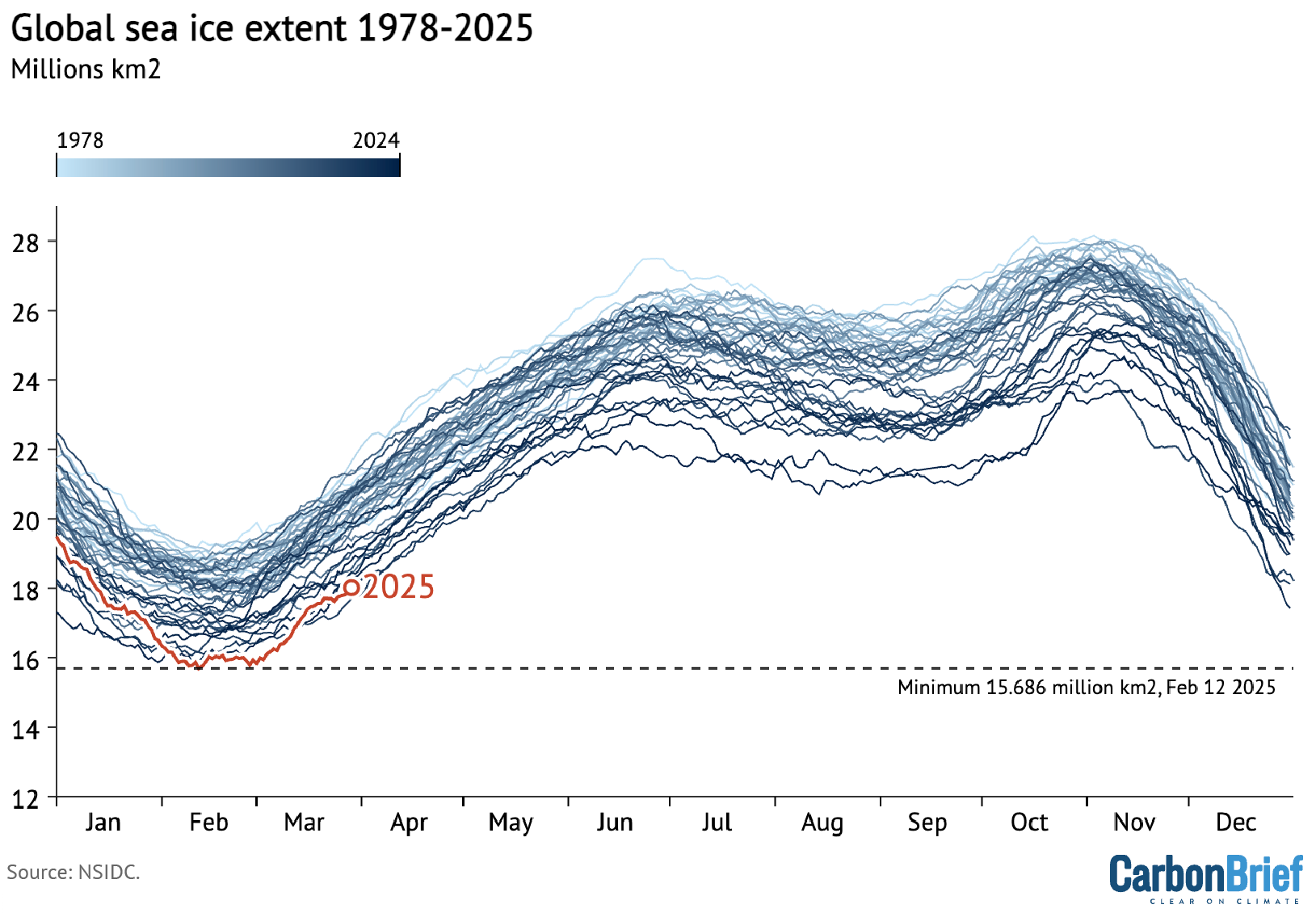
C3S deputy director Dr Samantha Burgess noted that the low sea ice came as “February 2025 continues the streak of record or near-record temperatures observed throughout the last two years”. She added:
“One of the consequences of a warmer world is melting sea ice – and the record or near-record low sea ice cover at both poles has pushed global sea ice cover to an all-time minimum.”
In response to the news from C3DS, Prof Richard Allan – a professor of climate science at the University of Reading – warned that “the long-term prognosis for Arctic sea ice is grim”. He added:
“Averaging over all regions the global warming trend is clear, with February 2025 more than 1.5C above pre-industrial conditions, repeating a level of excess warmth experienced in all but one of the past 20 months despite a weak cooling influence of La Niña conditions in the Pacific.”
This article is republished from Carbon Brief under a Creative Commons license. Read the original article.
This Is The Best Evidence That Atlantic Currents Are Slowing (AMOC Explained)
The AMOC is one of Earth’s most vital systems and is at risk of collapse. Ocean scientist Lisa Beal discovered that the Gulf Stream is slowing down, indicating a potential tipping point for the Atlantic Meridional Overturning Circulation (AMOC). Maiya May heads to Georgia to meet Stacey Abrahms and learn how an ambitious non-profit hopes to electrify everything. She then travels to take her first flight lesson in an all-electric plane. Finally, she returns to Florida to learn about the final piece of the puzzle in reaching net-zero carbon emissions: nature. Weathered is a show hosted by weather expert Maiya May and produced by Balance Media, which helps explain the most common natural disasters, their causes, how they’re changing, and what we can do to prepare.



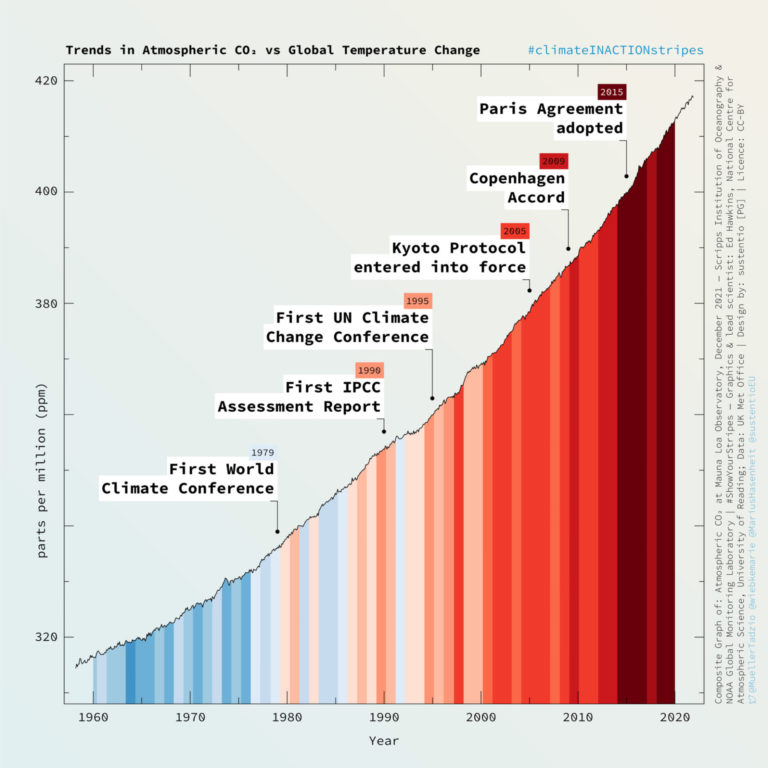
Comments are closed.